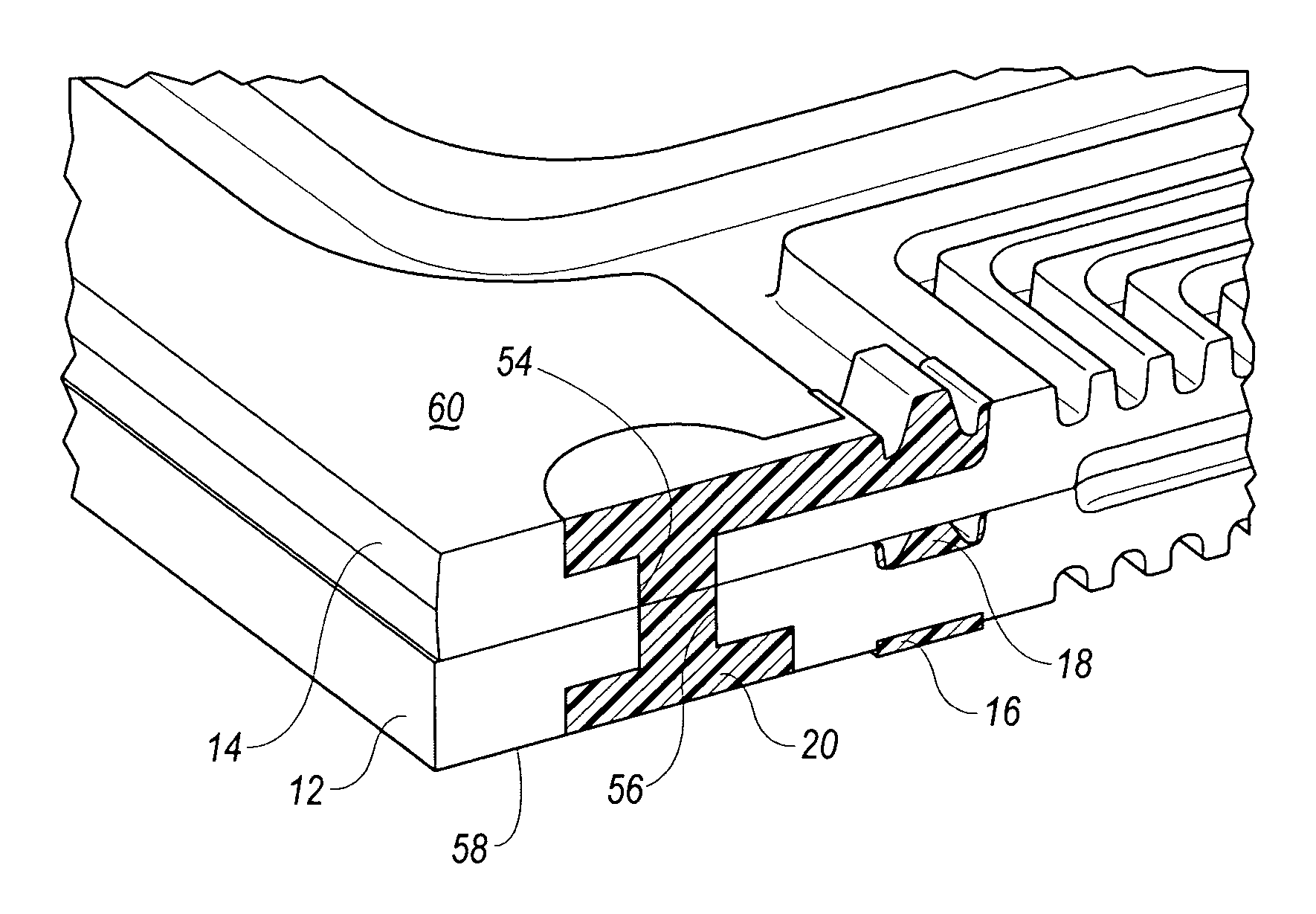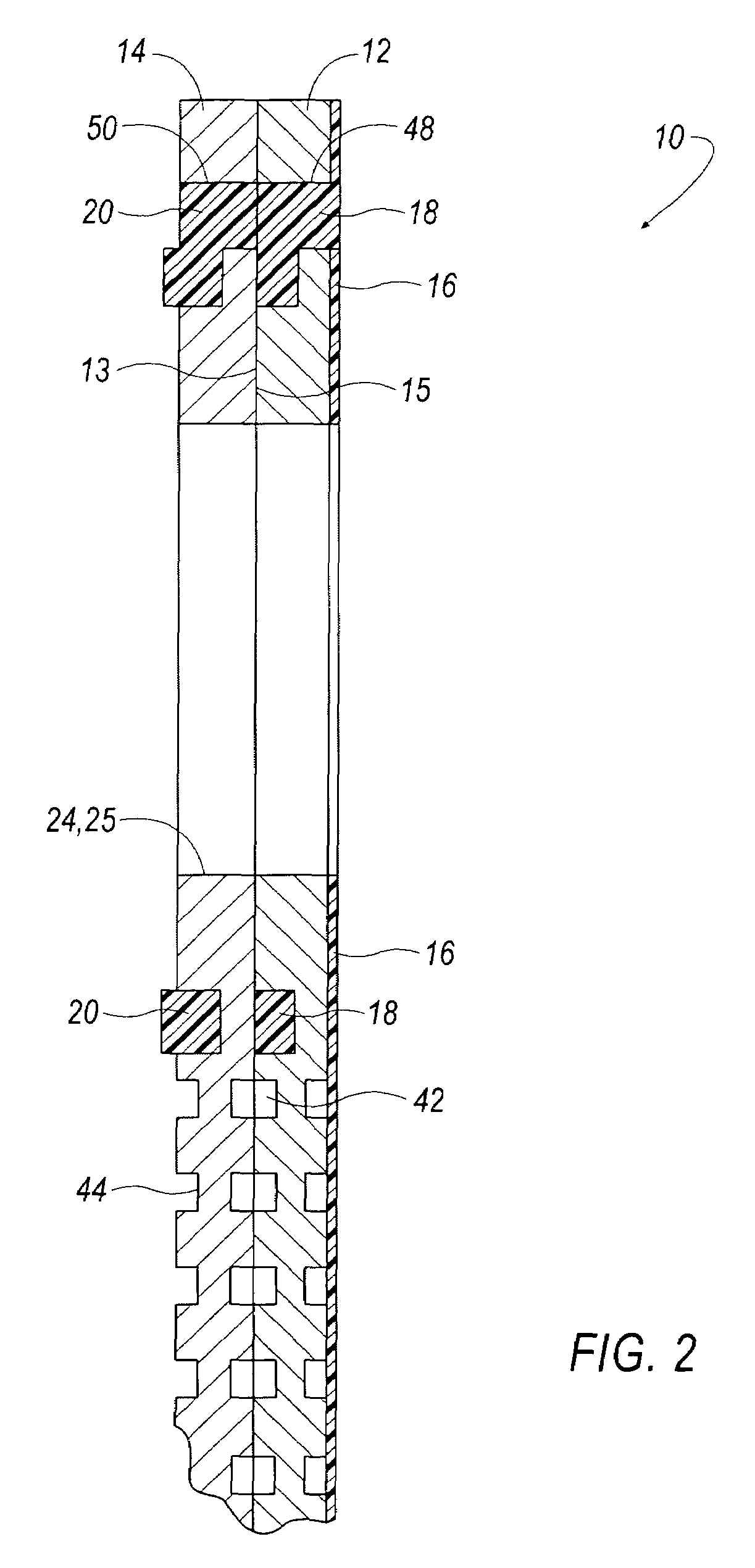Molded fuel cell plates with seals
- Summary
- Abstract
- Description
- Claims
- Application Information
AI Technical Summary
Benefits of technology
Problems solved by technology
Method used
Image
Examples
Embodiment Construction
[0018]Referring to FIGS. 1 and 2, an electrolytic fuel cell unit 10 is shown, which includes an anode plate 12 and a cathode plate 14. Stacks of such fuel cell units 10 are assembled together to provide composite fuel cell structures (not shown) to generate electric power. In such a stack, an insulation layer 16 is interposed between each fuel cell unit 10.
[0019]First and second resilient media 18, 20, or gaskets, are interposed between each fuel cell unit 10, as well as between each plate 12, 14. Although the media 18, 20 are shown separately in FIG. 1, one embodiment of this invention provides a means by which the media 18, 20 are integrally connected in one single, contiguous mass of material as described below. In another embodiment of the invention, the insulation layer 16 is integrally formed with the first resilient media 18. The insulation layer 16 is preferably and generally thicker than the media 18, 20 in both embodiments.
[0020]Each of the media 18, 20 is accommodated by ...
PUM
| Property | Measurement | Unit |
|---|---|---|
| Pressure | aaaaa | aaaaa |
| Power | aaaaa | aaaaa |
| Flow rate | aaaaa | aaaaa |
Abstract
Description
Claims
Application Information
 Login to View More
Login to View More - R&D
- Intellectual Property
- Life Sciences
- Materials
- Tech Scout
- Unparalleled Data Quality
- Higher Quality Content
- 60% Fewer Hallucinations
Browse by: Latest US Patents, China's latest patents, Technical Efficacy Thesaurus, Application Domain, Technology Topic, Popular Technical Reports.
© 2025 PatSnap. All rights reserved.Legal|Privacy policy|Modern Slavery Act Transparency Statement|Sitemap|About US| Contact US: help@patsnap.com



